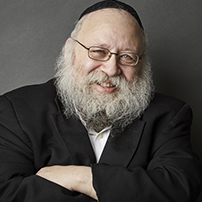
Where Did Moses Go?
The second of the two sections of the Torah that we will read this Shabbos begins with the words:
“Vayeilech Moseh-Moses went, and he spoke the following words to all Israel.”
Indeed, the very name of this parsha is Vayelech-and he went.
All the commentators grapple with the question, were did he go? The Torah does not mention where he went, just that he went and spoke to all Israel.
Smooth Transference of Leadership
Kli Yakar explains that Moses went throughout the entire Jewish camp with agility to prove that his leadership was not ending because he was physically weak, but rather, because it was G-d’s will that he transfer leadership to his trusted disciple Joshua.
If he had not done so, the people would have thought that Joshua was not chosen by G-d and that they did not therefore have to listen to him the way they listened to Moses. Thus, Moses informed them that it was entirely G-d’s will that he pass away despite his physical ability to continue and that the transference of power from him to Joshua should not be challenged.
Moses’ Humility
Ibn Ezra says that he went to each tribe to address them individually.
In the past, when Moses wanted to address the people, he would gather the nation and address them, as is befitting for a leader. One would have expected that his final address would have the entire nation gather around the Mishkan where he would deliver his message to them as he had done for the past 40 years.
But, Moses, the humblest man to have ever lived, upon reaching the pinnacle of his spiritual journey before his passing, does not summon the people to him but goes to them. Moreover, Moses does not take any shortcuts; he makes the effort to address each tribe individually. Precisely at the time it would have made more sense that the people come to him collectively to hear his farewell address, Moses alters his approach and goes to them.
Went to the House of Study
Targum Yonoson [a Midrashic Aramaic translation] provides a surprising explanation that Moses went to the Beis Ulfana-House of Study before delivering his last lecture. Presumably, Moses wanted to prepare his talk by refreshing his memory so that his words would be clear and leave no room for misunderstanding.
Here too, Moses demonstrated his humility as well as his dedication to his disciples. Moses could have easily relied on his brilliance and incredible memory and delivered his final message extemporaneously, but he wanted to impress upon us the responsibility of a teacher to be well prepared so that he does not short change his students.
Go Out of Your Comfort Zone!
Midrash Tanchuma provides a fourth explanation as to where Moses went that will tie together two of the foregoing explanations:
The Midrash states:
“Vayeilech-and he went” can only be explained as an expression of rebuke as it says, ‘Go and see G-d’s works [Psalms 46:9].’”
The implication here is that Moses went to rebuke the people.
The question arises, why would the Torah allude to Moses’ rebuking of the people with the expression of “going?” The Torah could have just said that Moses rebuked the people. Furthermore, the following words of Moses do not appear to be a rebuke.
A contemporary commentator, Yalkut Shimshon, answers the question by referring to a statement in Ethics of the Fathers [2:10] where the Sage Rabbi Yochanan ben Zakai said to his students:
“Go out and see which is a good way to which a person should cleave.”
What did Rabbi Yochanan mean when he said “go out”? Where were they to go?
The answer is that Rabbi Yochanan ben Zakai was not asking them to physically go outside, but to figuratively go out of their mindset. He did not want his students to base their answers on their own assumptions or on some superficial analysis. He wanted them to go out of their thought patterns, a paradigm shift, to discover the right path. We cannot rely on our preconceived notions and entrenched beliefs when we deal with existential questions about life and its purpose. And we cannot be content with our initial understanding but must seek continually to delve deeper into ourselves and into the subject matter and avoid giving, pat, hasty or off-the-cuff answers.
The verse from the Psalms cited above which states that we should “go out to see G-d’s works” means that we should not view the world superficially but recognize the Divine in everything by opening our eyes to see beyond the veneer.
This explains the meaning of the words “And Moses went” and how it was understood by the Midrash to be words of reproof. The rebuke did not lie in what Moses said but in what he did. The rebuke lay in the fact that Moses served as a model for us to never be too old to change our paradigm. He left his own comfort zone and viewed himself, G-d and the people in a totally new light. Despite his greatness and having been their leader for so long he challenged himself to go to the next level of leadership.
This was the ultimate rebuke.
This approach to Moses’ “going,” that it was a paradigm shift, ties in with the Ibn Ezra’s explanation that Moses physically went to each of the tribes instead of having them coming to him. The fact that Moses changed his approach from addressing them in one gathering of the people to one of going out to meet each tribe individually was another manifestation of his paradigm shift. Indeed, it serves as a powerful lesson for us all not to stand on ceremony and be prepared to change from our past behavior; even if the past was a good and righteous one. Moses did not have to say anything to impart lessons; his going out to them is what constituted the ultimate rebuke. He had no need to add to that by what he would say because the greatest sermon could not compare to actually witnessing Moses’ ability to change so dramatically.
This premise also connects to Targum Yonoson’s explanation that Moses went to the House of Study. This too was a manifestation of his ability to transcend himself. Precisely at the time when he was at his prime and did not need to refresh his memory, he changed course and humbly went to the House of Study to prepare himself to address the Jewish nation.
As we stand on the threshold of the Final Redemption, akin to the Jewish nation’s standing on the threshold of first entering the Land of Israel, it behooves us to follow Moses’ example of opening our eyes to view the world through the prism of the Era of Moshiach and Redemption. Especially as we stand on the threshold of the New Year 5784, reading about the Jews standing at the threshold of the Land of Israel, we must follow Moses’ example of going out of ourselves.


